With PECB training courses, opportunities are only limited by your imagination. Regardless of your field of expertise, PECB offers training courses that speak to your needs and reflect the latest standards, technologies, approaches, most innovative methods, and practical examples.
+ISO 14001 Environmental Management System
Environmental management is essential for organizations aiming to contribute to sustainability and minimize their negative impact on the environment. It involves implementing strategies, processes, and controls to identify, assess, and manage environmental risks and opportunities. By proactively addressing issues such as pollution, resource consumption, waste, and energy consumption, organizations can contribute to the preservation of natural resources and help the planet. In this regard, ISO 14001 provides organizations with specific requirements for an environmental management system (EMS) that organizations can use to enhance their environmental performance, fulfill compliance obligations, and demonstrate their commitment to sustainability.
What is ISO 14001? ISO 14001 is a globally recognized standard that specifies the requirements for establishing, implementing, maintaining, and continually improving an environmental management system. It provides organizations with a structured framework to effectively address environmental obligations and enhance their environmental performance. Through effective planning, implementation, and performance evaluation, organizations can continually monitor their progress and take necessary actions to improve their environmental performance.
To ensure continual improvement, ISO 14001 follows the Plan-Do-Check-Act (PDCA) cycle. This cycle guides organizations in planning an EMS, implementing controls and processes, monitoring and evaluating EMS performance, and taking appropriate actions to continually improve the effectiveness of the EMS. By embracing the PDCA cycle, organizations can systematically enhance their environmental performance, meet environmental objectives, and maintain a sustainable approach to environmental management.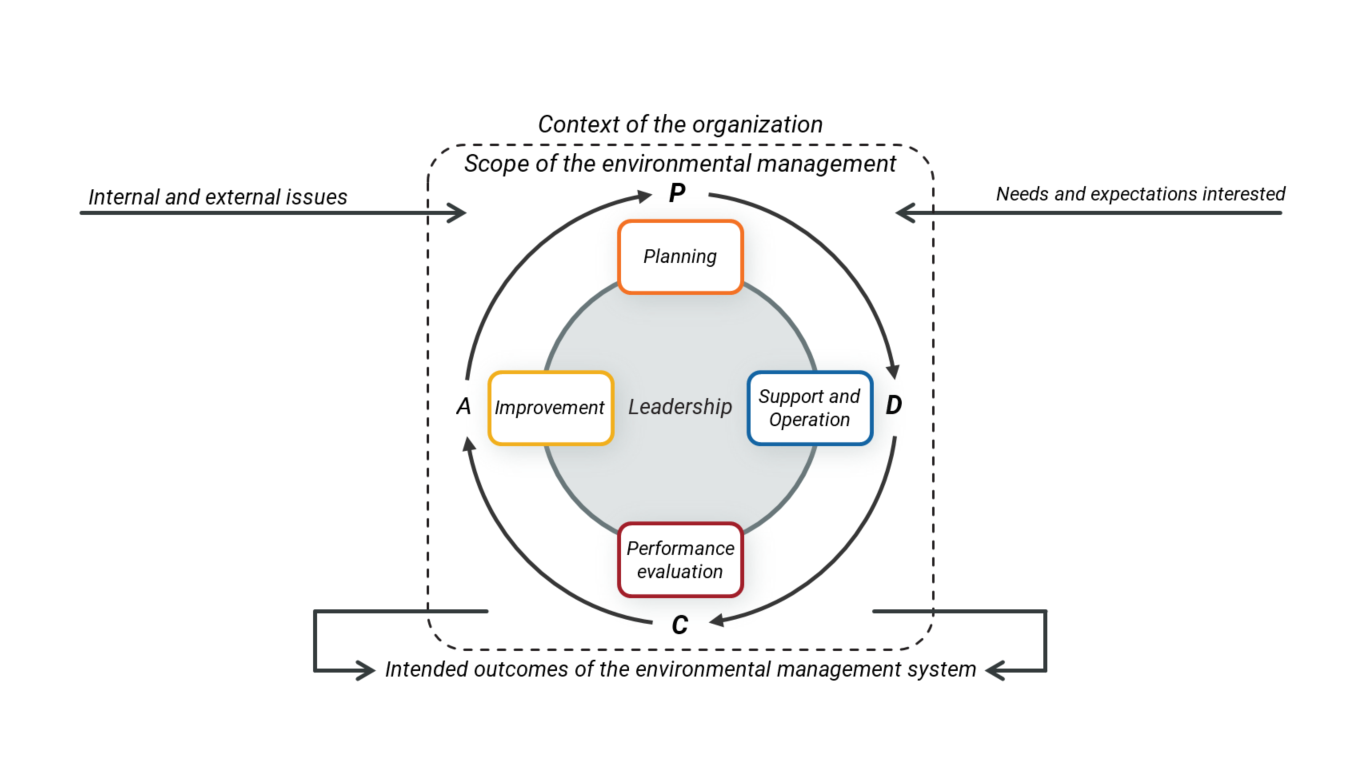
ISO 14001, Figure 1 — Relationship between PDCA and the framework of ISO 14001
Overall, ISO 14001 enables organizations, regardless of their type, size, or industry in which they operate, to demonstrate their commitment to environmental sustainability, comply with applicable environmental regulations, and achieve their environmental objectives. By integrating risk management, setting environmental objectives, and embracing the PDCA cycle, organizations can foster a culture of sustainability.
Why is ISO 14001 important for organizations?
Current environmental issues have become a challenge for organizations across various industries. Protecting the environment and responding to changing environmental conditions are essential to achieve sustainable development. Therefore, it is crucial for organizations to establish and maintain an effective EMS. By doing so, organizations demonstrate their commitment to environmental responsibility and effectively manage their environmental impact.
ISO 14001 provides a systematic approach for reducing ecological footprint and contributing to a healthier and more sustainable planet. An effective EMS helps organizations identify, manage, and minimize the negative impact on the environment. An EMS based on ISO 14001 helps organizations use resources efficiency, reduce waste, prevent pollution, and comply with environmental regulations. Additionally, it enables organizations to demonstrate their commitment to environmental responsibility and sustainability to interested parties, including customers, employees, and regulatory bodies. Compliance with the standard helps build trust and credibility, enhancing the organization's reputation in the market.
ISO 14001 also emphasizes the need for continual monitoring, evaluation, and implementation of corrective actions, helping organizations to constantly enhance their environmental practices.
What are the benefits of an effective EMS based on ISO 14001?
An EMS based on ISO 14001 enables organizations to achieve environmental objectives. Specifically, it enables organizations to:
- 1.Improve environmental performance
- 2.Identify the environmental aspects of their activities, products, and services, and prevent and mitigate their environmental impacts
- 3.Reduce energy usage and waste
- 4.Ensure compliance with environmental regulations and other legal requirements
- 5.Enhance reputation and credibility
- 6.Ensure trust and improve relations with customers and other interested parties
- 7.Minimize costs
- 8.Increase awareness and responsibility regarding sustainable development and ecological integration
How do I get started with ISO 14001 training courses?
The PECB ISO 14001 training courses aim to help you acquire the necessary environmental management competencies. If you aspire to pursue a career in environmental management as an implementer, auditor, or consultant, we at PECB are excited to welcome you to our global network of professionals and assist you throughout the entire certification process.
+ISO 9001 Quality Management System
In our current globalized economy and complex supply chains, John Ruskin’s adage, “Quality is never an accident. It is always the result of intelligent effort” is even more relevant today than it was on the day he said it. Organizations cannot rely on chance and hope to deliver quality products and services; instead, they must establish a consistent and planned approach for managing quality. With over one million certified organizations worldwide, ISO 9001 remains the world’s most well-known standard, which provides organizations with a structured approach for quality management and helps them consistently provide products and services that meet and, where possible, exceed customer requirements.
What is ISO 9001?
Published initially in 1987, ISO 9001 is the first international management system standard (MSS) that specifies the requirements for the establishment, implementation, operation, maintenance, and continual improvement of a quality management system (QMS) in an organization.
ISO 9001 is based on seven quality management principles and it aims to help organizations be more efficient and improve customer satisfaction. A common misconception is that ISO 9001 is intended for larger companies and manufacturers. However, the requirements of ISO 9001 are generic and applicable to any organization, regardless of its type, size, or the products or services it provides.
Although ISO 9001 was initially published in 1987, it has undergone several revisions in order to keep up with good practices and trends in the business world and ensure continuous suitability. The latest (5th) edition of the standard is titled ISO 9001:2015 Quality Management Systems – Requirements. After running a survey with over 8,000 respondents, in May 2021, the ISO subcommittee for quality systems (ISO/TC 176/SC 2) confirmed that ISO 9001:2015 is still relevant and recommended that it remains unchanged.

Figure 1: ISO 9001 publication and revision timeline
Why is ISO 9001 important for organizations?
Ever since its initial publication, ISO 9001 has been the most recognized and widely used management system standard. A QMS based on ISO 9001 enables organizations to ensure success in the long term. In addition, a certified QMS provides additional assurance to customers and business associates, which further improves the business of an organization.
Even though ISO 9001 sets the minimum requirements that must be met, it still allows organizations to tailor the QMS to their needs. Thus, organizations should determine their overall context in order to identify issues, constraints, and opportunities that are specific to their context. In addition, they should set objectives and establish processes which contribute to the achievement of those objectives.
A distinct feature of a QMS based on ISO 9001 is that it puts customers first. “Meeting customers’ needs and exceeding their expectations” is engraved in the quality management principles, and is implied continuously on the requirements stated in clauses 4 to 10 of the standard. As such, organizations that implement and establish a QMS based on ISO 9001 will maintain the focus on their customers by continuously identifying their needs and requirements, obtaining feedback from them, and continually improving their products and services to fulfill their needs. This focus on customer satisfaction is one of the key factors that have allowed the ISO 9001 to achieve the landmark status.
Like most of the management system standards, ISO 9001 is structured according to the High-Level Structure (HLS) and shares the common terms and core definitions. This alignment enables an easier integration with other management systems based on standards such as ISO 14001, ISO/IEC 20000-1, ISO/IEC 27001, ISO 22301, etc. Apart from ensuring consistency and reducing costs, integrating several management systems can improve the organization’s ability to successfully address other organizational commitments.
Benefits of ISO 9001 for organizations
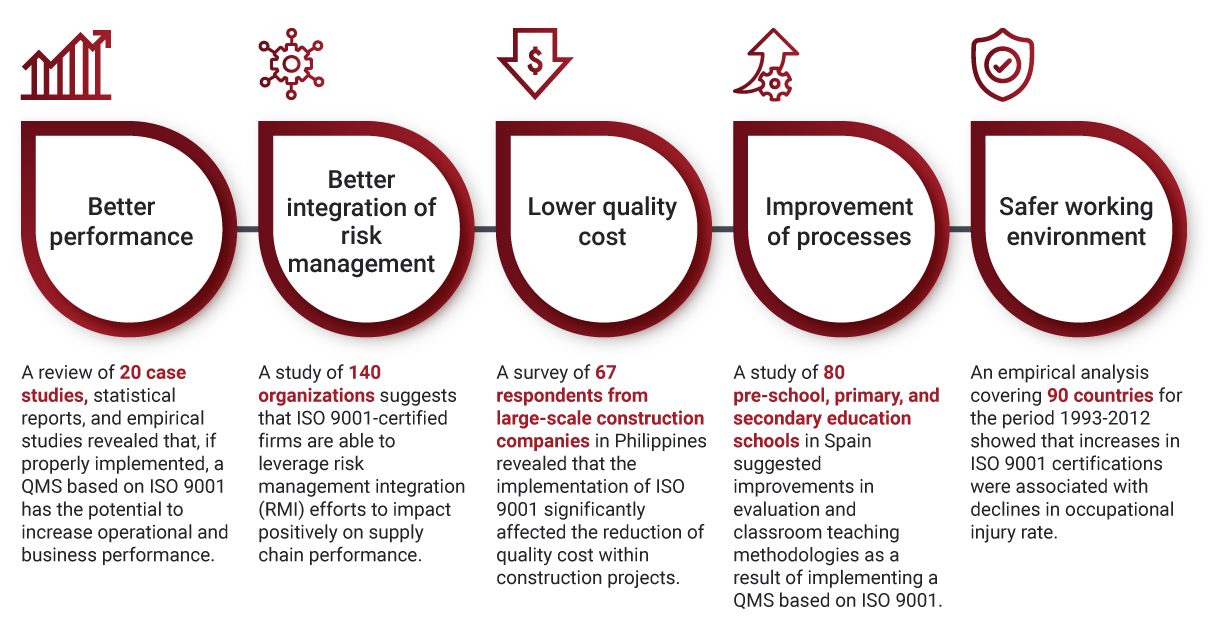
Figure 2: Benefits of implementing a QMS based on ISO 9001
Why should you attend one of our ISO 9001 training courses?
While ISO 9001 can be used by organizations to obtain many benefits, many organizations are unable to fully realize the benefits of a QMS implementation. There are different factors which contribute to the inability to integrate the QMS into the organization’s processes. Such factors include, but are not limited to:
- 1.The perception of the QMS as a system of documentation.
- 2.The inability to identify nonconformities.
- 3.The inability to ensure continual improvement.
PECB’s training courses, both lead implementer or lead auditor, are tailored to overcome such challenges.
Globally recognized, PECB certifications demonstrate an individual’s professional capabilities to contribute in an organization’s QMS, as an auditor, implementer, or QMS implementation team member.
Obtaining a certificate in ISO 9001:
- 1.Distinguishes you from other quality management consultants/auditors
- 2.Demonstrates your awareness and knowledge of an internationally recognized standard for the management of quality in organizations
- 3.Demonstrates that you have the necessary competencies to guide and support organizations through the implementation and management of a QMS (PECB Certified ISO 9001 Lead Implementer)
- 4.Demonstrates that you have the necessary competencies to assess the conformity of a QMS against the requirements of ISO 9001 and the organization’s own requirements (PECB ISO 9001 Lead Auditor)
- 5.Qualifies you to conduct third-party certification audits on behalf of conformity assessment bodies (PECB ISO 9001 Lead Auditor)
- 6.Provides you with opportunities to further improve your career in quality management, either as an auditor, implementer, or a member of auditing/implementation team
Why choose PECB for an ISO 9001 certification?
As a global provider of training, examination, and certification services, PECB aims to help you demonstrate your commitment and competence by providing you valuable education, evaluation, and certification against internationally recognized standards.
Our ISO 9001 Lead Auditor and ISO 9001 Lead Implementer certificates are accredited by International Accreditation Services (IAS). The IAS Accreditation Mark provides additional value to the certificate and allows you to capitalize on the worldwide recognition that IAS holds.
+ISO 45001 Occupational Health and Safety Management System
The International Labour Organization (ILO) estimates that every year, around 2.3 million workers around the world die from work-related accidents. According to ILO, every year, worldwide, there are around 340 million occupational accidents and around 160 million are victims to work-related illnesses. While in the past decades, great efforts were made to improve the health and safety of workers, there is still a lot that must be done. To tackle the issues related to the health and safety of workers, ISO has developed ISO 45001, an international standard that defines the requirements for an occupational health and safety management system (OH&S MS).
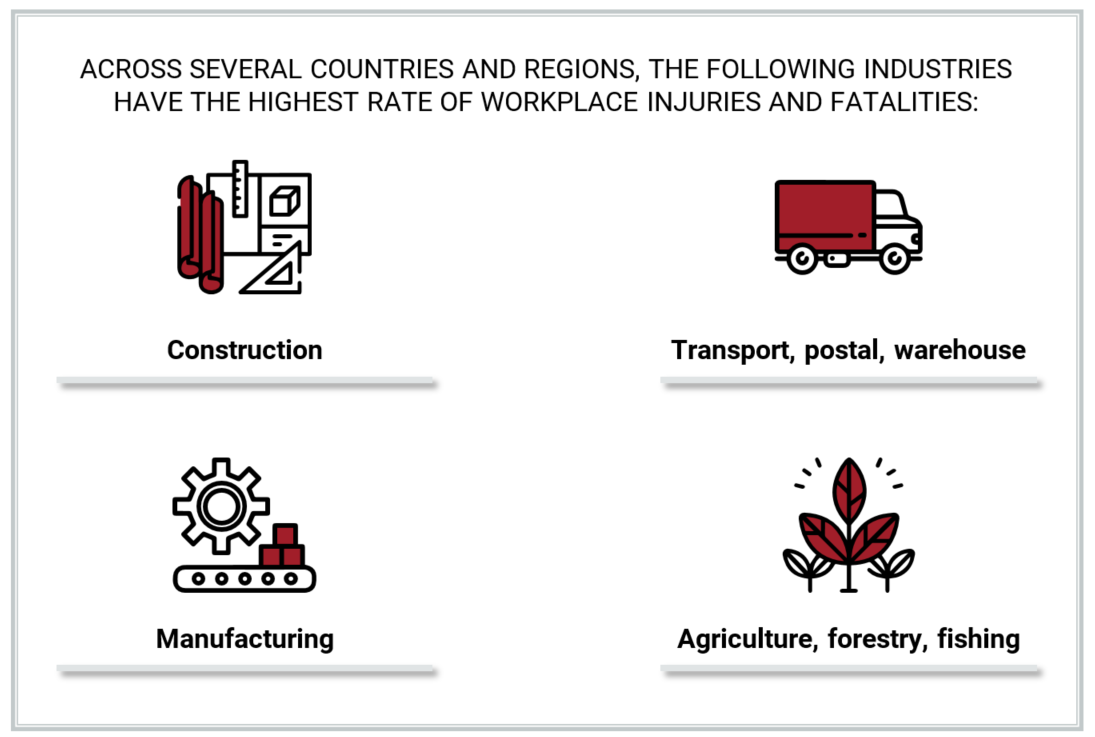
What is ISO 45001?
ISO 45001 is a set of guidelines that organizations can follow to ensure healthier and safer work environments. It's applicable to all types of organizations, with the goal of preventing work-related injuries and illnesses.
It shares a similar structure to other ISO standards, like ISO 9001 and ISO 14001, making it easier for organizations to integrate multiple management systems. Since its launch in 2018, it's replaced the British standard OHSAS 18001.
Why is OH&S MS important for you?
Due to the high number of occupational accidents and deaths, better and more effective practices which guarantee the health and safety of workers in the workplace is a necessity. To mitigate the risk and hazards in the workplace, organizations must prioritize the health and safety of their employees.
Organizations and individuals operating in any industry must collaborate to achieve the same goal, which is to reduce as much as possible the number of accidents that lead to injury or health-related issues.
Attending a PECB ISO 45001 training course, be it Foundation, Lead Auditor, or Lead Implementer, will enable you to comprehend internationally recognized practices that are intended to improve the working conditions and guarantee the well-being of employees. Furthermore, you will earn a globally recognized certificate on occupational health and safety management, which will demonstrate that you are capable to understand, implement or audit health and safety policies, controls, and processes to reduce work-related injuries.
Why set guidelines and procedures for OH&S?
There is no doubt that poor occupational health and safety practices bring enormous emotional distress, human costs, and economic burden. Therefore, organizations should employ a systematic approach to OH&S management.
Health and safety guidelines and procedures will help organizations to:
Prevent illnesses and injuries in the workplace: OH&S guidelines and procedures aim to promote health and safety in the workplace and protect workers from risks and hazards related to their health, safety, and well-being. The implementation of such guidelines and procedures contributes to the reduction of work-related illnesses and injuries.
Reduce health and safety hazards and risks: Organizations use different equipment and tools to do their work. As such, proper usage and personal care when working with organizational equipment is essential. Detailed guidelines and concise procedures for equipment use will enable organizations to reduce the health and safety hazards and risks in the workplace.
Prevent unwanted consequences: Well-constructed guidelines and procedures will help both workers and organizations to prevent the negative consequences of health and safety risks and hazards.
Benefits of ISO 45001 for organizations
An effective OH&S MS based on ISO 45001 has the potential to shape and improve an organization’s way of working and can make the workplace a safer and better place.
Some of the benefits that organizations would gain by implementing an OH&S MS based on ISO 45001 include, but are not limited to:
1.Enhanced reputation among internationally recognized businesses as a result of implementing the best practices of occupational health and safety
2.Increased trust of employees by demonstrating that the organization is committed to improve their safety and health in the workplace
3.Reduced insurance premiums and claims
4.Increased return on investment due to improved staff productivity, while the injuries within the workplace will be reduced
5.Reduced employee turnover because the main focus will be in the mental and physical well-being of the employees
How do I get started?
Seize the opportunity to become certified with PECB’s ISO 45001 training courses now, and we will make sure that our experts assist you throughout the entire process in order to offer you a worthwhile experience and welcome you to our global network.
+ISO 22000 Food Safety Management System
In the 20th century, humanity saw unprecedented socio-economic changes as well as scientific and technological advances. These factors impacted, among others, how food is produced, processed, and marketed: countries enacted food safety laws, companies began to use scientific methods to make food safer, technology allowed better packaging and quality assurance, and public awareness increased dramatically. Overall, food became safer and more nutritious.
Yet, in the 21st century many challenges remain. According to WHO estimates, 600 million people become sick and 420,000 die each year from unsafe food. Globalization and complex supply chains make controls and traceability more difficult. Climate change is likely to present direct and indirect challenges to food safety. In all of this, food producers will have to overcome new challenges and meet new expectations. However, they are not alone: ISO 22000 is here to help them fulfill their responsibility of ensuring the safety of their products and the well-being of their consumers.
A food safety management system (FSMS) based on ISO 22000 not only can improve a food producer’s measures against foodborne illnesses and diseases, it can also improve their credibility and increase customer awareness on food safety.
What is ISO 22000?
ISO 22000 is an international standard that specifies requirements for a food safety management system. An FSMS based on ISO 22000 gives food producers a structured approach and necessary mechanisms to manage the safety of their products and services. As part of the FSMS, ISO 22000 requires the establishment of effective communication with interested parties, implementing a risk-based approach, establishing and maintaining prerequisite programs, hazard control plans (OPRPs and CCPs), monitoring the performance of FSMS and food safety, and seeking and realizing continual improvement opportunities.
ISO 22000 adopts a process approach which integrates the plan-do-check-act (PDCA) cycle and risk-based thinking at organizational and operational levels. Organizations seeking to implement an FSMS based on ISO 22000 must establish a food safety policy and set the food safety objectives. The policy and objectives must be established by the top management, and a traceability system should be implemented to trace the products through the supply chain.
The requirements of ISO 22000 are generic and applicable to all organizations in the food chain, regardless of their size or complexity. ISO 22000 is developed according to the High-Level Structure (HLS), as such it is aligned with other ISO management system standards. This allows organizations to integrate an FSMS with other management systems such as a QMS based on ISO 9001, an EMS based on ISO 14001, etc. In addition, ISO 22000 encourages organizations to align with other guidelines, specifications, or requirements related to food safety or to specific food sectors which can further contribute to achieve the food safety objectives.
Benefits of ISO 22000 for food producers
The implementation of an FSMS can be highly beneficial for food producers that seek to improve their food safety performance. It ensures the application of adequate controls and procedures to ensure food safety.
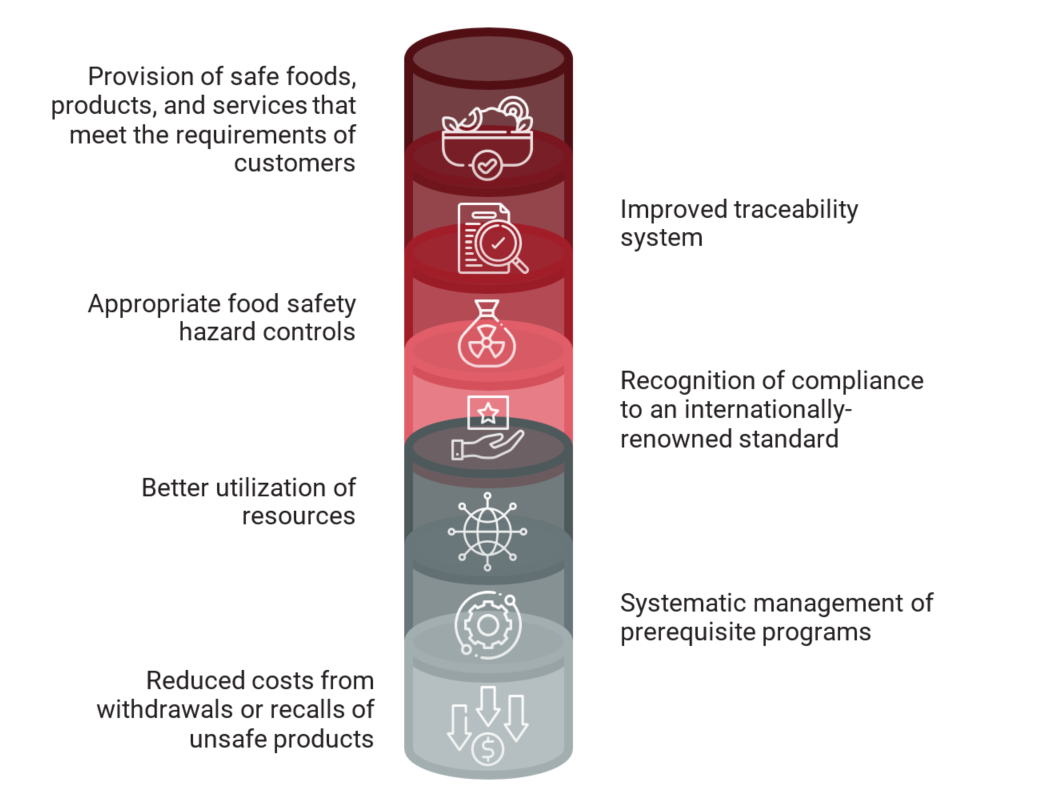
Why is ISO 22000 important for you?
As the companies in the food industry prepare to face the challenges of the 21st century, they will need mechanisms that ensure the safety of their products and services, and they will have to maintain and improve customer satisfaction and confidence. As such, these companies need competent individuals with proven credentials to establish, implement, audit, and maintain measures that ensure food safety.
An ISO 22000 certificate ensures a formal and independent recognition of your professional competences. PECB training courses are designed to enhance your knowledge and comprehension of ISO 22000 requirements and best practices of food safety. Specifically, our ISO 22000 Lead Implementer training course enables you to help, support, and guide organizations to establish, implement, maintain, and continually improve an FSMS based on ISO 22000. Our ISO 22000 Lead Auditor training course acquaints you with an auditing approach that is based on internationally recognized standards and good practices.
Why choose PECB for an ISO 22000 certification?
By successfully completing a PECB ISO 22000 training course and obtaining a certification, among others, you will be able to:
Comprehend the main concepts and principles of food safety management
Support and guide organizations in improving their general performance in food safety
Understand the best practices and adequate controls necessary in the food chain
Help organizations prevent and reduce the risks of contaminants in their products and work environment
Help organizations establish a traceability system
Support organizations in creating and protecting value
Help organizations gain competitive advantage
Determine whether an organization’s FSMS conforms to ISO 22000 requirements
Enable organizations achieve their food safety objectives
How do I get started?
We at PECB are excited to welcome you to our global network. We will assist you throughout the entire process in order to offer you a worthwhile experience.
+ISO 50001 Energy Management System
What is ISO 50001?
As an international standard, ISO 50001 specifies the requirements for organizations to develop, implement, and improve Energy Management Systems. This allows organizations to follow a specific framework that helps them achieve continual improvement in energy performance, efficiency, usage, and consumption. This framework specifies the measurements, documents, and reports, which enable organizations to monitor the progress of their processes and employees towards energy performance. ISO 50001 requires organizations to establish new policies for an efficient use of energy, to set aims and objectives to meet those policies and review their impacts; genuinely attempting to achieve continuous improvements of energy management
Why is Energy Management important for you?
Energy is crucial to the organization’s operations and can result in major costs regardless of its activities. Energy Management provides guidance on the usage of energy throughout the organization’s supply chain, from raw materials to recycling. Apart from costs, energy usage contributes to climate change as well. Considering that the search for alternative energy sources can be time consuming; every organization should aspire to reduce energy consumption and use. In addition, organizations should attempt to increase employee awareness towards energy conservation. By becoming ISO 50001 certified, you will acquire the necessary skills, which will enable you to help the organization comprehend the positive impacts of this standard. Likewise, you will assist the organization to reduce its contribution to global warming, thus become recognized as an environmentally friendly organization.
Benefits of ISO 50001 Energy Management
By becoming ISO 50001 certified, you will be able to:1.Increase energy efficiency
2.Contribute to cost reduction
3.Gain competitive advantage
4.Increase effectiveness
5.Promote best energy practices
6.Improve energy performance
7.Implement environmentally friendly practices
8.Help the organization to improve its reputation
9.Assist the organization in energy management
10.Contribute to the organization’s continuous improvement
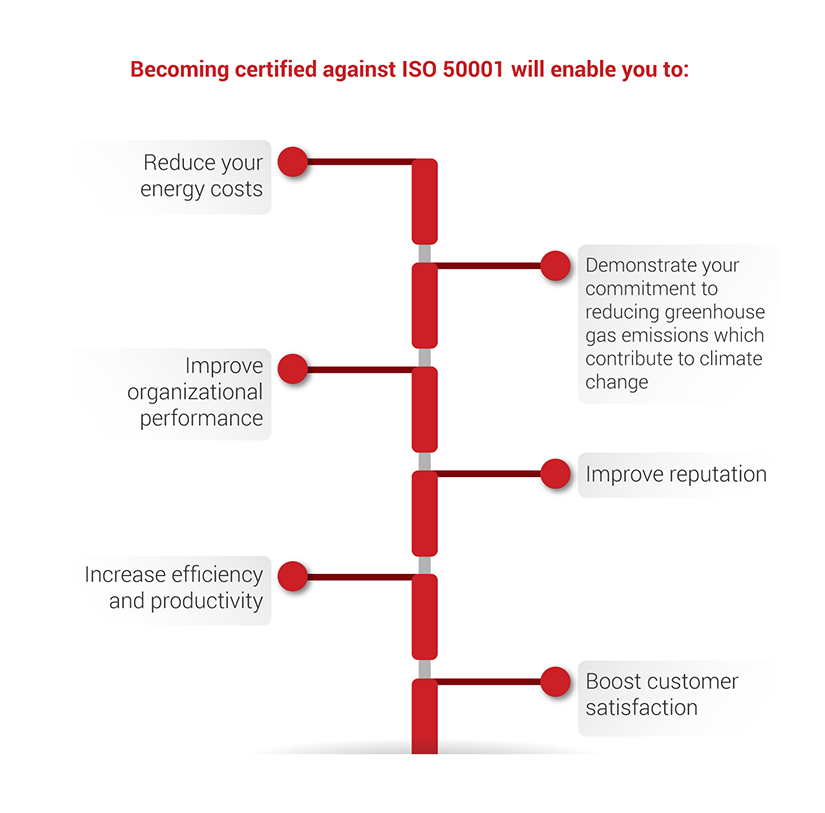
How do I get started with ISO 50001 Training?
If you use the opportunity to become ISO 50001 certified, we will make sure that our experts assist you throughout the entire process in order to offer you a worthwhile experience and welcome you to our global network.
+ISO 31000: Risk Management
Risk is present in every aspect of our life, from mundane everyday activities such as choosing a route to work, to complex corporate decisions such as opening a manufacturing plant in a different country. Much effort was put over the past decades to better understand risk and its nature, which led to the creation of methodologies and approaches that enable individuals and organizations to make accurate decisions based on logical reasoning. One of the most distinguished frameworks to address risk is provided by ISO 31000, an international standard that incorporates principles, proven practices, and guidelines on managing risks faced by organizations.
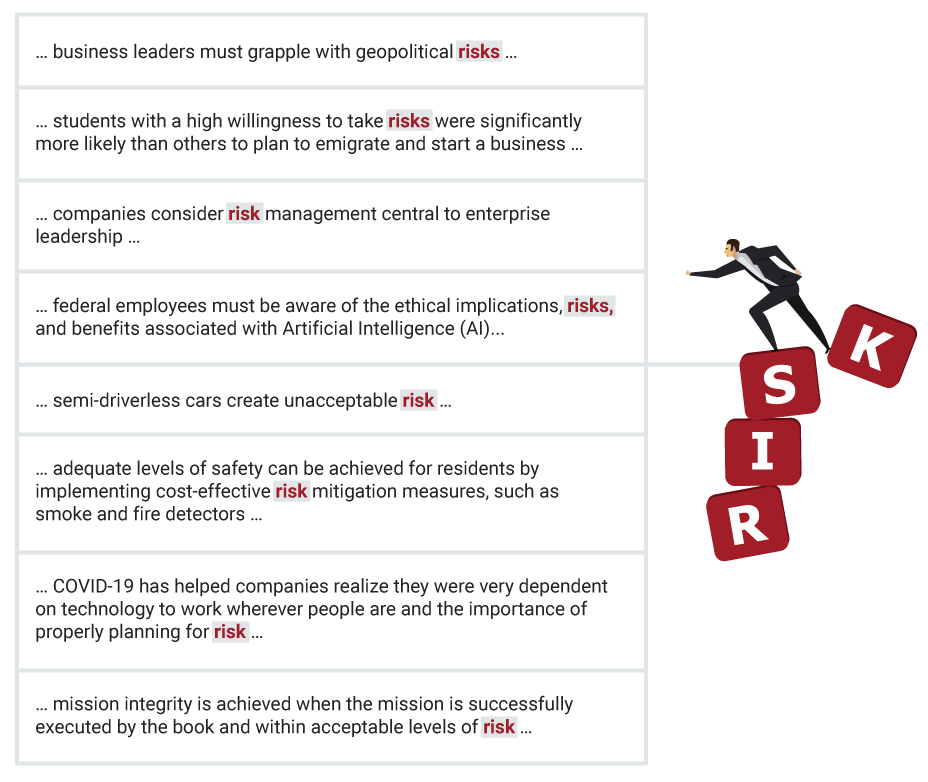
What is ISO 31000?
ISO 31000 is an international standard that provides guidelines on managing any type of risk in any business activity. The standard provides guidelines on principles, risk management framework, and application of the risk management process.
ISO 31000 is applicable to organizations of all types and sizes who seek to integrate risk management into business functions. It covers the risk management principles which are the foundation for managing risk, and guides organizations in developing a risk management framework by:
1.Integrating risk management into organizational structures
2.Designing a framework for managing risk that fits the organization’s context
3.Implementing the risk management framework
4.Evaluating the effectiveness and continually improve the suitability and adequacy of the risk management framework
5.Demonstrating leadership and commitment (top management)
ISO 31000 considers the risk management process as an integral part of overall management and decision-making. The risk management process can be applied on a strategic level and organization-wide, but it can also be applied on projects, products, and processes. ISO 31000 provides guidelines on risk communication and consultation, defining of the scope, context, and criteria, risk assessment, risk treatment, monitoring and review, and lastly, recording and reporting of risks.
Why is ISO 31000 important for organizations?
Organizations performing in any industry in any place are constantly exposed to risks. Managing these risks based on the principles, framework, and process outlined in ISO 31000 provides a level of assurance that allows organizations to succeed and thrive in an environment of constant change. The implementation of ISO 31000 guidelines can improve operational efficiency by facilitating the integration of risk-based decision-making into governance, planning, management, reporting, policies, values, and culture of an organization.
ISO 31000 enables organizations to identify the potential risks that could hinder the achievement of business objectives. It will also help them to determine the significance of risks and decide which risks should be mitigated first in order to achieve the objectives before they affect the business, and effectively keep all other risks under control. In addition, ISO 31000’s best practices allow organizations to develop a desired risk management culture.
A risk management approach based on guidelines of ISO 31000 clearly indicates that organizations are committed to managing risks in every part of the business. It increases the public confidence among customers and other stakeholders as it demonstrates the organizations’ capabilities in mitigating internal and external threats. A risk management process based on ISO 31000 will enhance the reputation of an organization and give it a competitive advantage.
Why should you pursue a certification in ISO 31000?
An ISO 31000 certification demonstrates that you have the necessary competencies to support an organization in creating and protecting value. In addition, it shows that you are able to assist organizations in establishing a risk strategy, achieving strategic objectives, and making informed decisions.
Certification in ISO 31000 helps you:
1.Distinguish yourself from other risk management professionals
2.Demonstrate awareness of risk management principles and other underlying concepts of risk
3.Demonstrate the competencies to establish a risk management framework that is tailored to the needs and context of an organization
4.Show capability to apply the risk management process based on the recommendations of ISO 31000
5.Show awareness of the importance of integrating risk management into significant activities and functions of an organization
6.Have a more successful career in risk management
Why choose PECB?
As a global provider of training, examination, and certification services, PECB aims to help you demonstrate your commitment and competence by providing you valuable education, evaluation, and certification against internationally recognized standards. Our ISO 31000 Risk Manager and ISO 31000 Lead Risk Manager certificates are accredited by IAS. The IAS Accreditation Mark provides additional value to the certificate and allows you to capitalize on the worldwide recognition that IAS holds.
How do I get started?
We at PECB are excited to welcome you to our global network. We will assist you throughout the entire process in order to offer you a worthwhile experience.
+ISO/IEC 27001 Information Security Management Systems
What is ISO/IEC 27001?
ISO/IEC 27001 provides requirements for organizations seeking to establish, implement, maintain and continually improve an information security management system. This framework serves as a guideline towards continually reviewing the safety of your information, which will exemplify reliability and add value to services of your organization.
Why is Information Security important for you?
ISO/IEC 27001 assists you to understand the practical approaches that are involved in the implementation of an Information Security Management System that preserves the confidentiality, integrity, and availability of information by applying a risk management process. Therefore, implementation of an information security management system that complies with all requirements of ISO/IEC 27001 enables your organizations to assess and treat information security risks that they face.
Certified ISO/IEC 27001 individuals will prove that they possess the necessary expertise to support organizations implement information security policies and procedures tailored to the organization’s needs and promote continual improvement of the management system and organizations operations.
Moreover, you will be able to demonstrate that you have the necessary skills to support the process of integrating the information security management system into the organization’s processes and ensure that the intended outcomes are achieved.
Benefits of ISO/IEC 27001 Information Security Management
PECB ISO/IEC 27001 Certificate will prove that you have:
Obtained the necessary expertise to support an organization to implement an Information Security Management System that complies with ISO/IEC 27001
Understood the Information Security Management System implementation process
Provide continual prevention and assessments of threats within your organization
Higher chances of being distinguished or hired in an Information Security career
Understood the risk management process, controls, and compliance obligations
Acquired the necessary expertise to manage a team to implement an ISMS
The ability to support organizations in the continual improvement process of their Information Security Management System
Gained the necessary skills to audit organization’s Information Security Management System
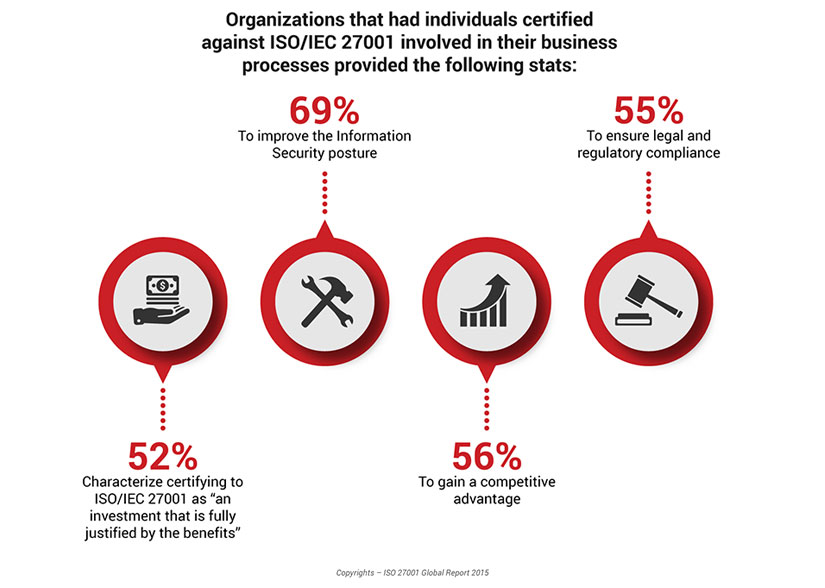
How do I get started with ISO/IEC 27001 Training? Interested in expanding your knowledge and advancing your skills on Information Security? PECB experts are here to ease the certification process and help you obtain PECB Certified ISO/IEC 27001 Credentials.
+ISO/IEC 27005 Information Security Risk Management
What is ISO/IEC 27005?
ISO/IEC 27005 provides a risk management framework for organizations to manage information security risks. Specifically, it provides guidelines on identifying, analyzing, evaluating, treating, and monitoring information security risks. The standard supports the guidelines of ISO 31000 and is particularly helpful for organizations aiming to safeguard their information assets and achieve information security objectives.
A risk management process based on ISO/IEC 27005 involves the establishment of an iterative risk assessment approach, implementation of risk treatment options, continual communication and consultation with interested parties, monitoring and review of the risk management process, and documentation of risk management processes and results.
ISO/IEC 27005 can be really helpful for organizations that seek to meet the requirements of ISO/IEC 27001 regarding risk management. By establishing a risk management process based on ISO/IEC 27005, organizations increase the effectiveness of their ISMS, address information security risks, and establish appropriate information security risk management practices.
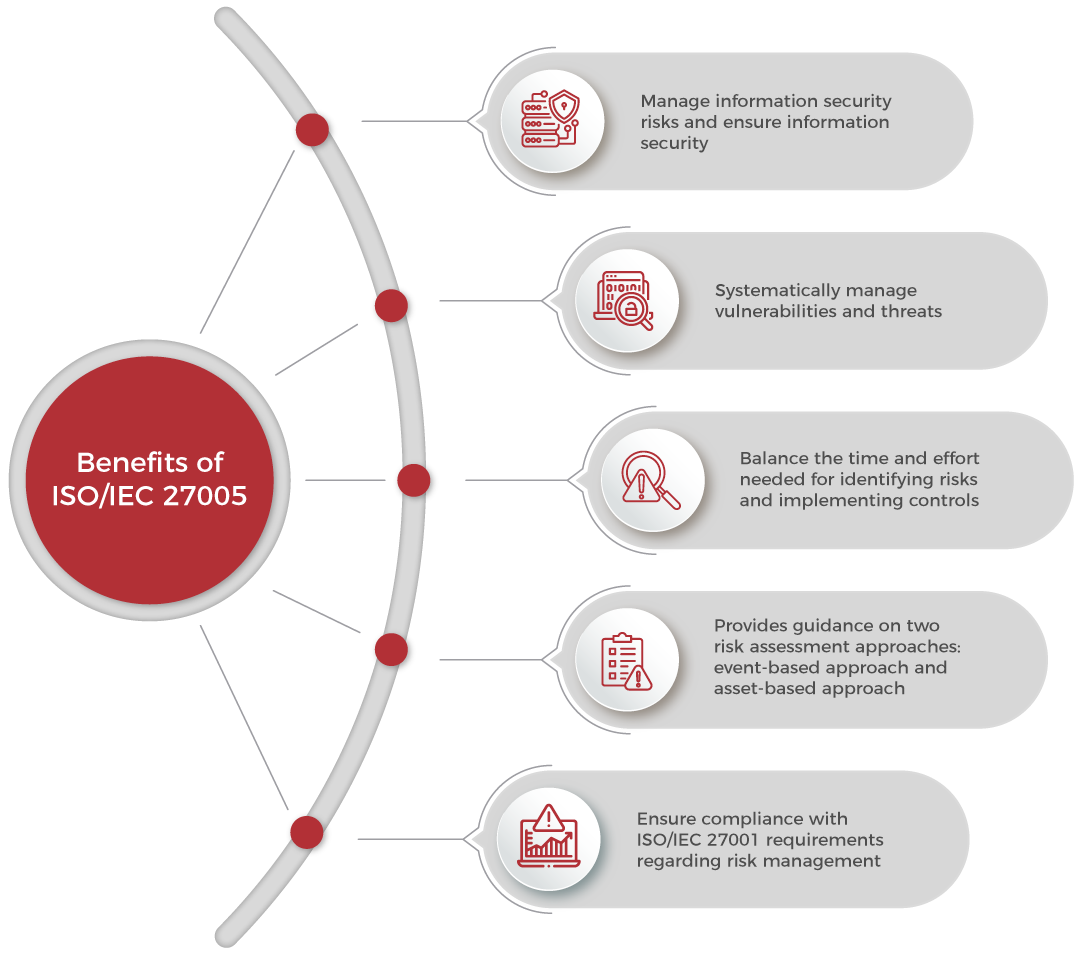
Why is ISO/IEC 27005 important for you?
As a professional in the field of information security, ISO/IEC 27005 will help you understand how information security risks can be effectively managed by establishing a comprehensive risk management process. ISO/IEC 27005 guidelines will help you gain the necessary competencies to identify, analyze, evaluate, and treat various information security risks.
PECB Certified ISO/IEC 27005 individuals will demonstrate that they have the necessary knowledge and skills to ensure that the information assets are properly protected. Furthermore, a PECB Certified ISO/IEC 27005 credential demonstrates that the individual can establish an information security risk management process that is appropriate to the organization’s context.
What are the benefits of PECB ISO/IEC 27005 certification?
A PECB ISO/IEC 27005 certification will demonstrate that you have the necessary competencies to:
1.Explain and utilize the risk management concepts and principles based on ISO/IEC 27005
2.Manage information security risks based on best practices
3.Establish an information security risk management process based on the guidelines of ISO/IEC 27005
4.Align the information security risk management process with the ISMS
5.Support an organization in continually improving its information security risk management processes and ISMS
6.Integrate risk management into the activities and functions of organizations
How do I get started with ISO/IEC 27005 training?
The PECB ISO/IEC 27005 training courses aim to help you acquire the necessary competencies to improve information security management by systematically managing information security risks. We at PECB are excited to welcome you to our global network of professionals and we will assist you throughout the entire certification process.
Contact us to start with the first step in obtaining a PECB Certified ISO/IEC 27005 credential!
Why choose PECB?
As a global provider of training, examination, and certification services, PECB aims to help you demonstrate your commitment and competence by providing you valuable education, evaluation, and certification against internationally recognized standards.
A PECB ISO/IEC 27005 certification will give you competitive advantage in the ever-evolving field of information security. The PECB ISO/IEC 27005 certification program is globally recognized and will help you become a highly competent professional in the field.
+ISO 22301 Business Continuity Management System
What is ISO 22301?
ISO 22301, the international standard for business continuity management systems (BCMSs), is a comprehensive framework designed to enable organizations to effectively prepare for, respond to, and recover from unexpected incidents. By implementing a BCMS, organizations can detect and mitigate threats, as well as ensure uninterrupted operations. ISO 22301’s inclusive requirements are suitable for organizations of all types, sizes, and complexities, allowing them to adapt the standard to their unique operating environments. ISO 22301 is particularly advantageous for organizations seeking to ensure compliance with their business continuity policies, maintain service delivery during disruptions, and strengthen overall resilience through effective BCMS implementation.
ISO 22301 serves both as a protective measure and an evaluative tool. It helps organizations assess their capability to meet specific business continuity needs and obligations, thus ensuring long-term operational stability.
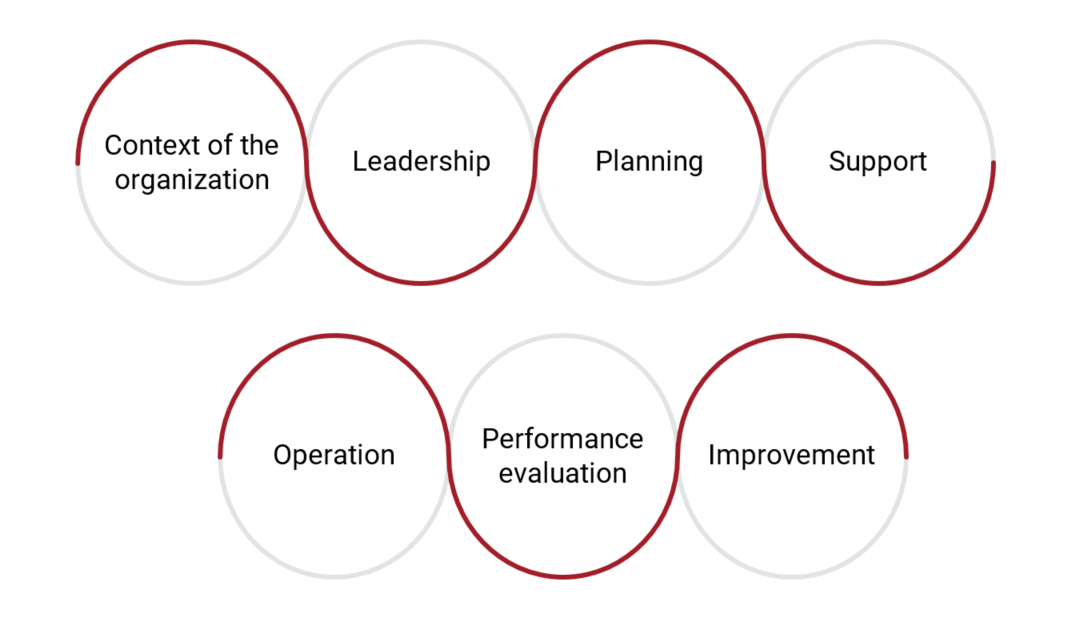
Why is Business Continuity important for you?
The numerous challenges and uncertainties in today’s business landscape, increase the importance of a resilient business continuity management system. Compliance with ISO 22301 stands as a crucial benchmark for organizations across various sectors, helping them to enhance their ability to handle disruptions, minimize risks, and safeguard critical operations. Adhering to the ISO 22301 standard enables organizations to fortify their response to incidents, ultimately elevating their overall operational security.
Certified ISO 22301 professionals will be able to demonstrate their profound knowledge of the standard’s requirements and effective implementation strategies and expertise in guiding organizations through business continuity management. With this certification, you will be well-prepared to lead teams in effectively managing disruptions, implementing robust controls, and ensuring compliance with ISO 22301, ultimately strengthening their ability to thrive in the face of adversity.

Benefits of ISO 22301 Business Continuity Management training
An ISO 22301 certification offers numerous advantages, including:
A deep understanding of how a BCMS can align with and support your organization’s objectives
The expertise to lead and manage a team in effectively implementing the BCMS based on ISO 22301
The acquisition of skills to identify risks and minimize the impact of incidents, which is crucial for safeguarding business operations
Ability to improve the recovery time of critical functions, making organizations more resilient
A professional reputation that demonstrates your commitment to excellence and best practices in business continuity, resulting in increased customer reliability and trust
International recognition which enhances your career prospects and credibility on a global scale
How do I get started with ISO 22301 training?
Our training courses are designed to meet the needs of professionals in the field of business continuity. A PECB certification reflects safety, reliability, and exceptional quality. If you are eager to join a global network and elevate your expertise, our dedicated experts are here to assist you every step of the way.
+Operational Risk Management in Financial Institutions
What is an Operational Risk Management (ORM) in Financial Institutions Certification?
An ORM in Financial Institutions certification demonstrates that operational risk managers have acquired the necessary competencies to exercise their function effectively. There are three levels of certification: Foundation, Manager, and Lead Manager. The content of these training courses cover various published sources, field standards, general market practices, as well as findings from recent research. Each level of certification provides a comprehensive view of ORM standards and theory and elaborates the best practices of the field.
Why is an ORM in Financial Institutions Training Course Essential for You?
The ORM in Financial Institutions training courses provide the knowledge and skills that professionals need to enter, manage, and lead the operational risk discipline in financial services. These include learning how to establish an operational risk management framework and how to utilize the methods and tools to identify, assess, mitigate, and monitor operational risk.
The qualified trainers, the content of the training courses, and the respective exams will help you acquire and demonstrate the knowledge and skills to exercise your role and function effectively and gain professional recognition in the market. By obtaining a PECB Certified ORM in Financial Institutions credential, you will be able to improve the reliability of business operations and avoid losses that may come from poor risk management.
Benefits of ORM in Financial Institutions Certification
An ORM in Financial Institutions certification will demonstrate that you:
1.Understand the regulatory requirements and best practices of operational risk management in the financial services
2.Learn how to establish and operate an operational risk management framework in the context of a financial organization
3.Understand the approaches, methods and tools to identify, assess, mitigate, and monitor operational risk in the financial services industry.
Moreover, since this is a “Certification,” you will enjoy some benefits that a “Certificate” does not provide. Such benefits include:
1.Standardized credentials
2.Evidence of skill and experience
3.Process
4.Regular maintenance
5.Legal determination of employment eligibility
6.Worldwide recognition
How Do I Get Started with an ORM in Financial Institutions Training?
The objective of the PECB ORM in Financial Institutions trainings is to provide you with the necessary knowledge and skills of the ORM. Our experienced field experts will teach you everything you need to know to improve the operational risk management framework in your organization.
+Risk Assessment Methods
What are Risk Assessment Methods?
Understanding how to effectively assess risk may be a challenge for many industries. The risk assessment methods: OCTAVE, EBIOS, and MEHARI, will provide you with the sufficient knowledge on how to successfully identify and assess risk in your organization.
OCTAVE – Operationally Critical Threat, Asset, and Vulnerability Evaluation were developed by the Computer Emergency Response Team (CERT), and it was funded by the US Department of Defense. This risk assessment tool is used to help prepare organizations for security strategic assessments and planning for their information.
EBIOS – Expression des Besoins et Identification des Objectifs de Sécurité, was developed by the French Central Information Systems Security Division. The goal of this risk assessment tool is to assess and treat risks with an IS, which would result in assisting the management decision-making, and guide stakeholders to find a mutual set of discussions.
MEHARI – Methode Harmonisee d’Analyse de Risques, was developed by CLUSIF, a non-profit Information Security organization. The goal of this risk assessment tool is to mostly to provide guidelines for ISO/IEC 27005 Implementation and analyze scenario-based risks landscapes for short-long term security management.
Why are Risk Assessment Methods essential for you?
Our risk assessment methods training courses including the OCTAVE, EBIOS, and MEHARI methods, will provide you with the sufficient knowledge on how to successfully identify and assess risk in your organization. Risk Assessment Methods play a key role when it comes to protecting the business and its valuable assets. These methods will provide you with crucial guidelines on focusing on the risks that are more dangerous and that can have a huge financial and reputational damage for our business.
Benefits of Risk Assessment Methods
Being certified against Risk Assessment Methods helps you:
To learn the concepts, methods, and practices allowing an effective risk management based on ISO 27005
To put into practice the requirements of ISO 27001 on information security risk management
To develop the skills needed to perform a risk assessment with the OCTAVE, EBIOS, and MEHARI techniques
To obtain the ability to effectively guide organizations on the best practices in information security risk management
To obtain the ability to effectively implement and manage an continuing information security risk management process
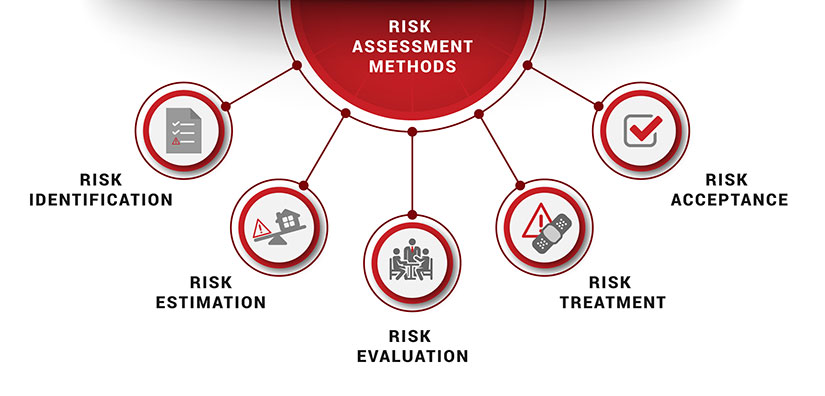
How do I begin with Risk Assessment Methods Training?
The objective and the outcome of the training will be to assist you in assessing risks using 3 methods, OCTAVE, EBIOS, and MEHARI. Through training,our tutors will guide you towards helping your business better the methods of risk assessments and protect the valuable assets.
